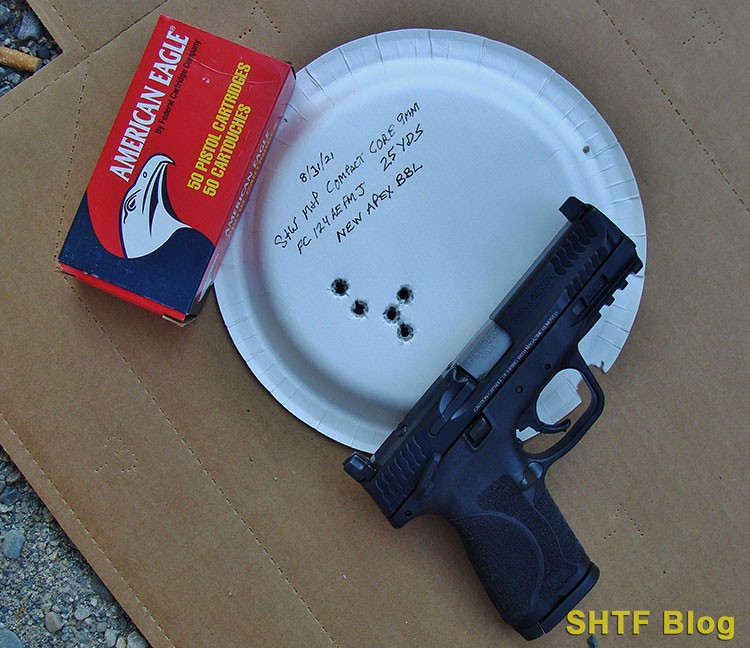
Smith and Wesson’s M&P pistols go together with Apex Tactical barrels like peanut butter goes with jelly.
When a product performs as advertised it’s always a refreshing experience, especially if it combines quality with a USA label, all for a fair price. The item covered here is an aftermarket barrel from Apex Tactical, and it’s designed to improve the accuracy of Smith & Wesson M&P pistols.
The company is well known for aftermarket parts such as triggers and barrels, all designed to enhance the performance of today’s popular pistols. Which begs the question:
Do you really need a “better” barrel?
Possibly, but maybe not. “Accuracy” can be a nebulous term, quantified either anecdotally or through varying protocols and standards.
How do You Define Accuracy?
For many moons, a centerfire hunting rifle capable of clustering three shots into an inch at 100 yards had been deemed accurate. Handgun standards seem looser. The published data I search for comes from those who test while minimizing the wobbles of humans, at uniform distances.
Here are some additional, rough guidelines:
- Little guns like snubby revolvers and small .380 pistols are often evaluated from the logical distance of 7 yards.
- Service-type revolvers, or pistols such as 9mm Glock 17s or S&W M&Ps (with barrels of around 4”), 25 yards serves well for meaningful comparisons.
Note that five-shot groups that offer promise from 15 yards will often produce aggravating fliers only ten yards further out.
But given the limitations of iron sights and heavier triggers, 50 yards is a poke for a service-type handgun, so 25 yards it is – ideally using a mechanical support like a Ransom Rest. If not, the alternative is a proper rest system combined with someone who can shoot.
Some M&P Experiences
During 2009, my state agency made a wholesale switch to S&W M&P pistols in 9mm and .40 S&W. Interchangeable grips were less common at that time. This feature was appreciated by our staff, who shot their new pistols better than their previous 3rd-Gen metal D/A S&Ws.
Actually, I’d been shown a pre-production M&P several years earlier, but greeted it as another tactical Tupperware-type knockoff. However, the loan of several pre-purchase T&E samples proved to be a gamechanger. We shot the hell out of ‘em with no complaints. I had finally found a pistol with ergonomics that rivaled or exceeded an old favorite; the Browning Hi-Power.
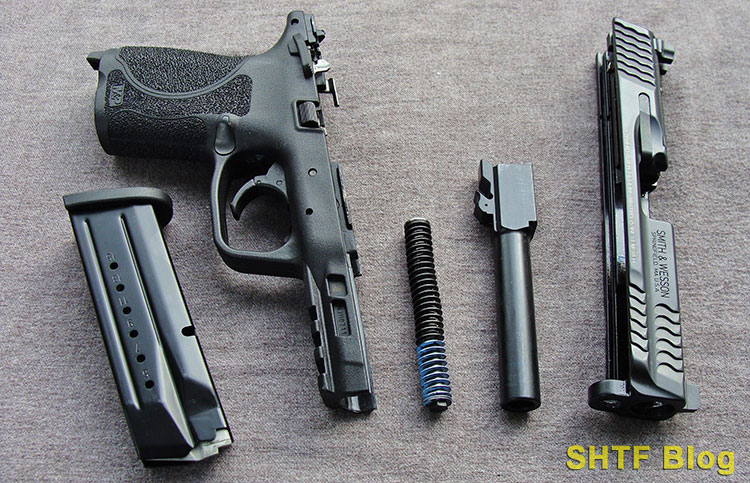
One sample, a 5-inch 9mm Pro, handled like a magic wand. Before long I and another Firearms Training Unit cadre member owned personal Pros. Our inventory of several hundred new 4 ¼” M&Ps produced accuracy of around 3-inches (at 25 yards), similar to many other polymer competitors and plenty good for a service-type pistol. But the Pro was a Performance Center version marketed for combat competitions with connotations of better performance.
Right off the bat I felt like I was outshooting mine. Several sandbag sessions later the verdict was in; mediocre accuracy at best. Three shots would often cluster inside two inches, but invariably two more would strike randomly, resulting in 25 yard groups of 3 inches or more (some exceeding 4”).
Two pistols and several barrels later (including an aftermarket version), little improvement was realized. As it turned out, I wasn’t the only unhappy Pro owner. Others experienced mixed results with supposedly “match-grade” replacement barrels from the same 2010 era.
Makes sense, since they were drop-in types subject to the varying tolerances of the pistols. I tinkered with my final Pro for several years but never achieved the 2” accuracy I sought. The ergonomics were good enough to produce respectable combat-course scores, but X-ring or A-zone counts suffered somewhat.
Apex Tactical Barrel to the Rescue
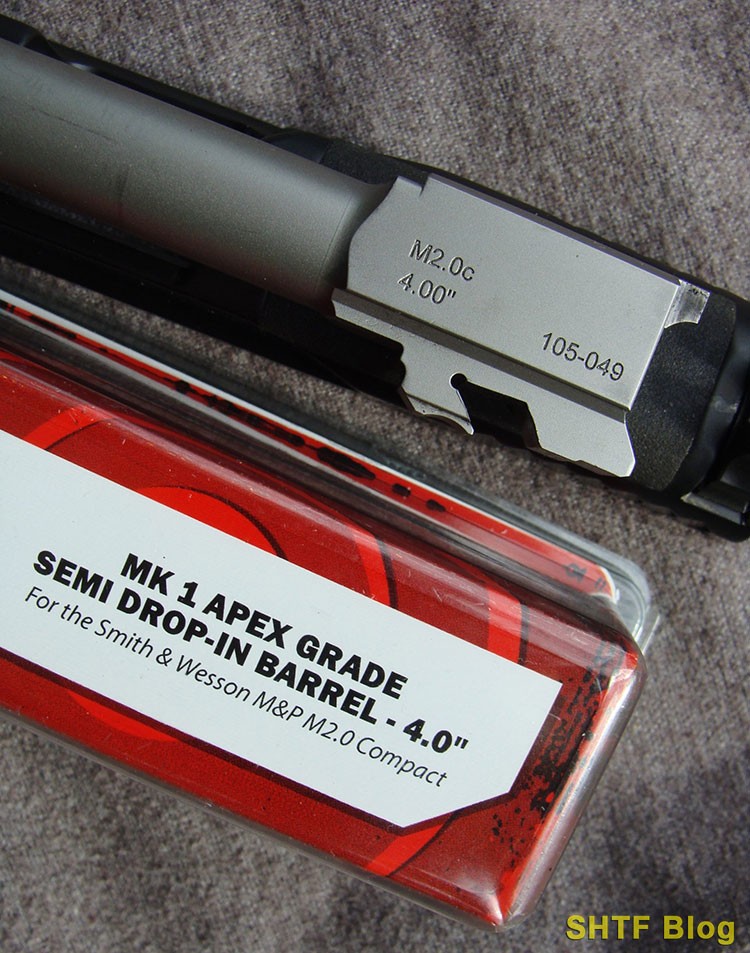
Fortunately, Randy Lee and his Apex Tactical staff were working on a solution. High-speed photography helped reveal the problem. Like other locked-breech designs (dating back to John Browning’s Model 1911 Government Model), an M&P barrel remains locked into the pistol’s slide during discharge.
This condition continues during the early stages of slide movement, just long enough for the bullet to exit the muzzle (necessary for safe containment of pressure). Once the bullet exits, the inertial effects of recoil continue to move the slide assembly rearward. Shortly thereafter, the barrel unlocks and separates, while the slide continues its travel. The whole process happens quickly, but is mechanically timed to optimize reliability and accuracy (with emphasis on the former for defensive pistols).
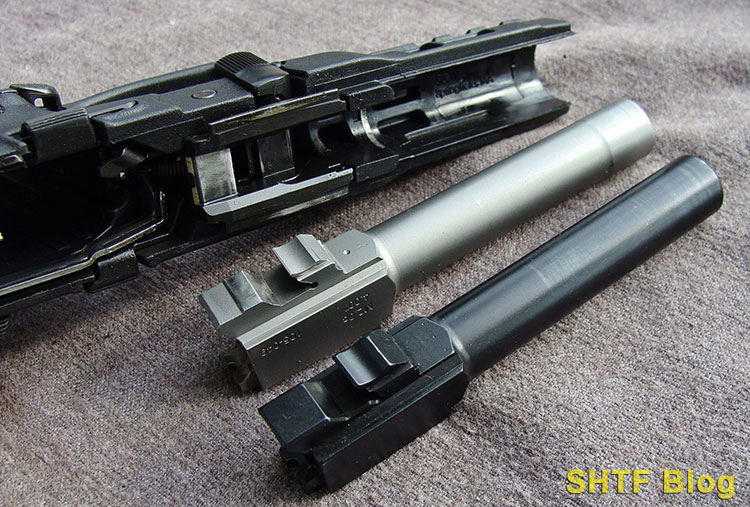
As it turned out, some S&W barrel breeches experienced preliminary flutter while the bullet was still traveling through the barrel. Without consistent support at the chamber-end (the locking section), the radial axis could vary, resulting in fliers.
Buy the Apex Grade 9mm Semi Drop-In Barrel (Optics Planet)
Apex Tactical’ s solution involved a barrel with geometry designed to maintain consistent locking, built to tighter tolerances – close enough to require final fitting in a few critical areas. For a good understanding of everything involved, check out their video toward the end of this article.
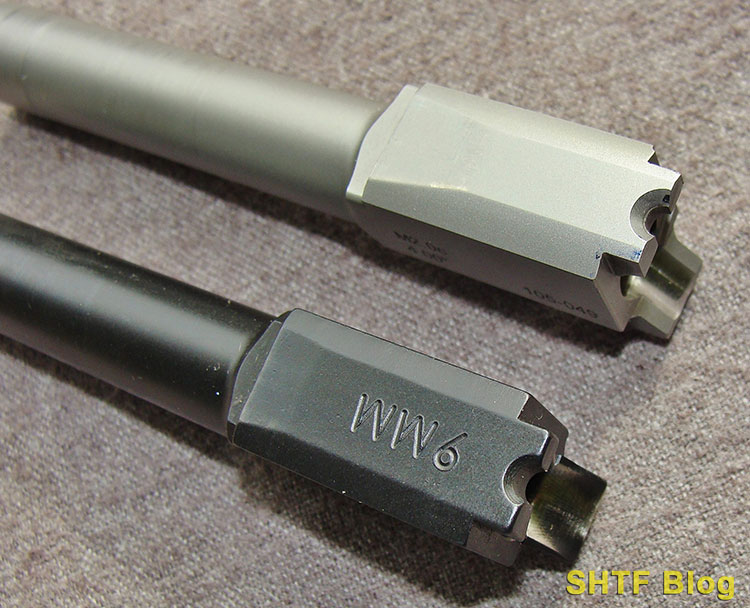
Fitting Process
Rather than detail the entire process, I’ll share a few photos for an overview. As received, the barrel’s few small oversize surfaces should prevent a drop-in fit.
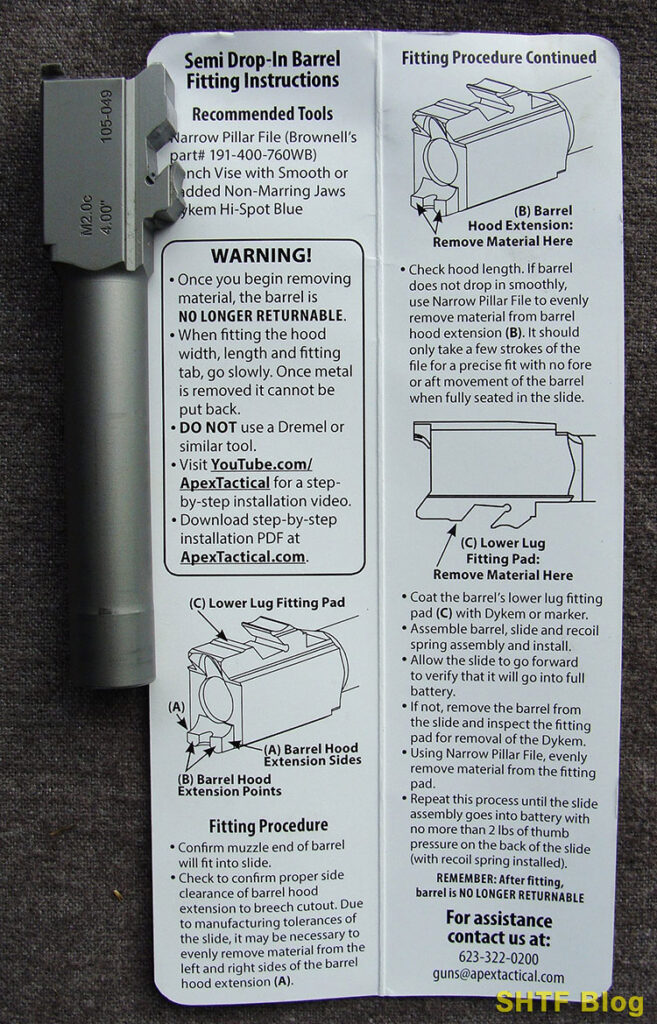
One area eliminates accuracy-robbing vertical barrel play, and another limits horizontal shifts. The muzzle-end could also require minor fitting but, for all of these surfaces, we’re only talking about a few thousandths of an inch.
Horizontal stability is achieved through solid contact of the two protruding ears on the upper breech surface (the space between them is a chamber-checking port). This extension will probably be too long for full seating of the breech section within the slide’s ejection port.
Careful shortening of the ears is the first step in the process. Once both parts properly engage, the assembled barrel and slide can be fitted to the frame.
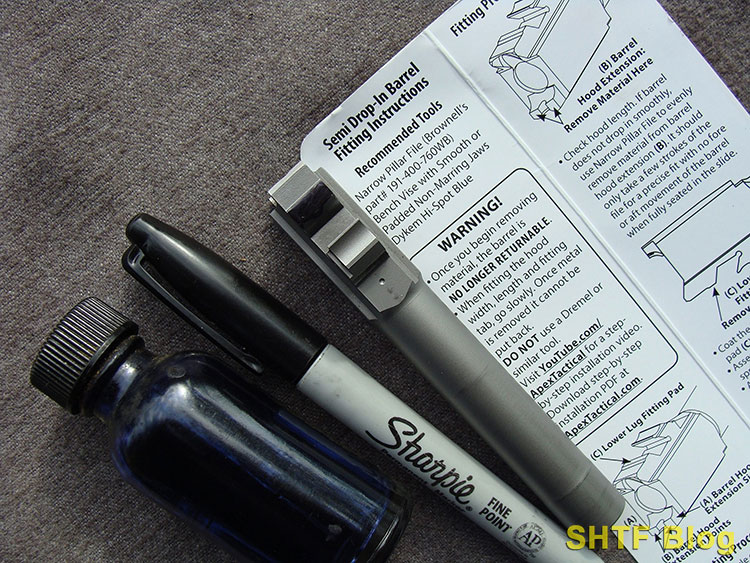
The vertical aspect is controlled by a small raised integral pad on the bottom of the barrel lug, just forward of the chamber. This shelf presses against a corresponding steel plate in the pistol’s frame, which elevates the squarish breech into full engagement with the slide’s ejection port. As received, the pad won’t clear its corresponding frame surface, so removal of some material is necessary.
It’s a trial and error process best executed with caution since any metal removed won’t grow back. Is it for everyone? Maybe, not. If you’re into demolition renovations instead of cabinetry, this might not be your thing. Those with skills for the latter or other pastimes like fly-tying are probably good to go.
The Apex fitting video is the go-to source for details if that’s where you’re at with your barrel:
Beyond patience, the only other real requirements are a file and some machinist layout blue (or a Sharpie Pen), and an optional Apex jig (which I didn’t use). Set aside some quiet time and plan on lots of repeat reassembly. The reward will be a barrel and slide assembly with no more play than a big-ticket customized 1911.
Apex Grade barrels resemble fine jewelry. Go heavy-handed and you may have regrets. Once the filing starts they’re non-returnable for understandable reasons.
Buy the Apex Grade 9mm Semi Drop-In Barrel (Optics Planet)
The good news: help is only a phone call away. I discovered my Apex 2.0 Pro barrel already had 0.002” of play between it breech and the slide’s ejection port.
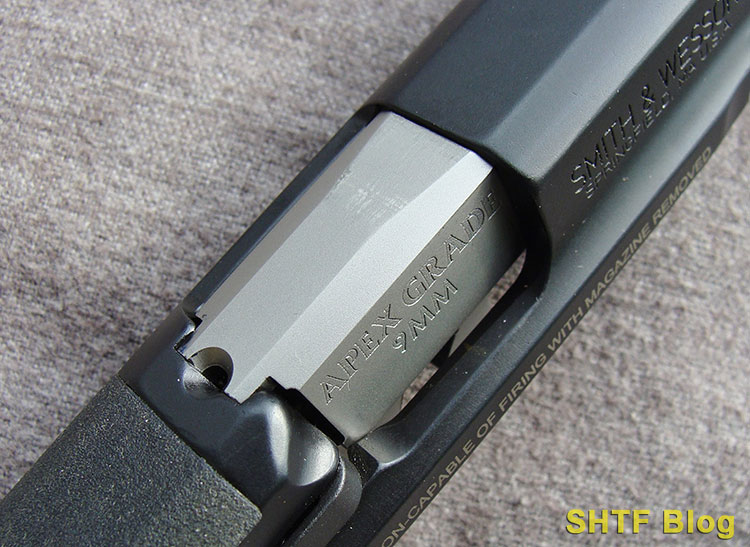
Upon placing a phone call to Apex, I was astounded to hear not only a live person, but one with the requisite knowledge. Turned out there were no worries. Apex had done previous experiments to determine the crucial gap threshold, well in excess of mine. The conversation wasn’t rushed, making it highly informative.
Neither of my Apex barrels required any fitting at their muzzle-ends, although both seemed wobble-free. Fired primers displayed nicely centered impacts with no indications of premature unlocking.
Hands-On Comparison of Results
During 2017, S&W introduced a revamped M&P 2.0, which eventually extended to the Pro. One that caught my eye during 2020 was their new ported CORE, factory machined to accept miniaturized red-dot sights. I’d been contemplating a move to an MRDS anyway, so I snagged my own when the opportunity finally arose.
As luck would have it, I’d previously bought an Apex Tactical 5” Pro barrel. Rather than fit it to my earlier Pro, because research indicated it would fit either version, I placed it in reserve pending accuracy results with the new version.
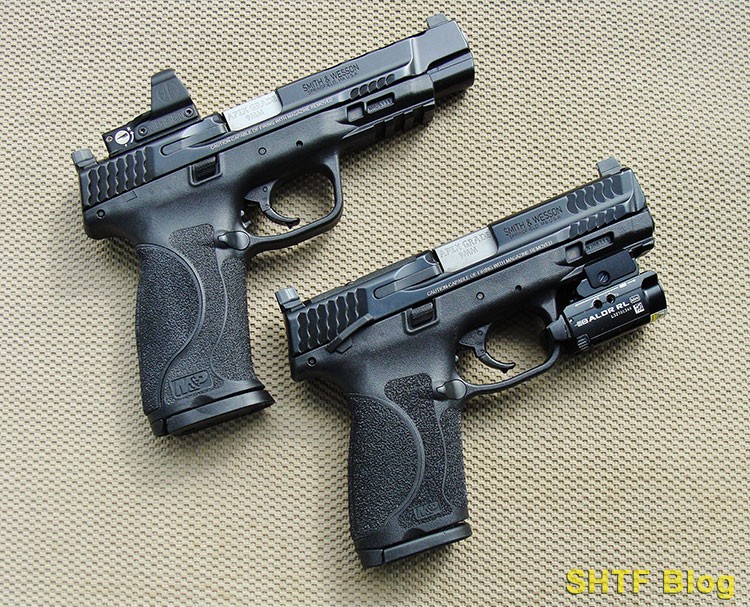
S&W M&P, 5” 2.0 Pro, 9mm Ported CORE
Supposedly, the newest Pros will shoot tighter groups. That was the case for mine. Its accuracy should satisfy many users, but the results were less than inspiring. Groups hovered between 2 ½ to 3- inches; this despite the addition of a Leupold Delta-Point Pro MRDS.
Long story short, after carefully fitting the Apex barrel to this pistol, five-shot 25-yard groups shrunk dramatically, averaging 1 ½ inches!
Of great relief, the Pro also ran like a Swiss watch. The trade-off was loss of the factory barrel porting; a concession I can live with – and the new 2.0 still looks pretty cool!
S&W M&P, 4” 2.0 Compact, 9mm CORE
Meanwhile, our agency had made a transition to 9mm M&P 2.0s, with around one hundred being 4” Compacts. I was considering one for myself but was now retired, so I reached out for feedback on their accuracy. The nebulous prognosis was “good.”
A few months later, the results with my own 2.0 Compact were less inspiring.
This pistol is also a CORE model. Despite my best efforts, 25-yard groups were four-inch patterns at 10:00, well above its tall fixed sights.
Rather than invest more loot for another MRDS, I bought a second APEX barrel designed expressly for 9mm 2.0 Compacts. Good move! The transformation was remarkable. I now owned a mass-produced polymer pistol that rivaled the accuracy of my custom Wilson KZ-9 (a now-obscure 1911 polymer hybrid).
The initial three groups still impacted a bit left, but their 25-yard elevation was spot-on. Each averaged 1 ½-inches – except for one flier in the first series.
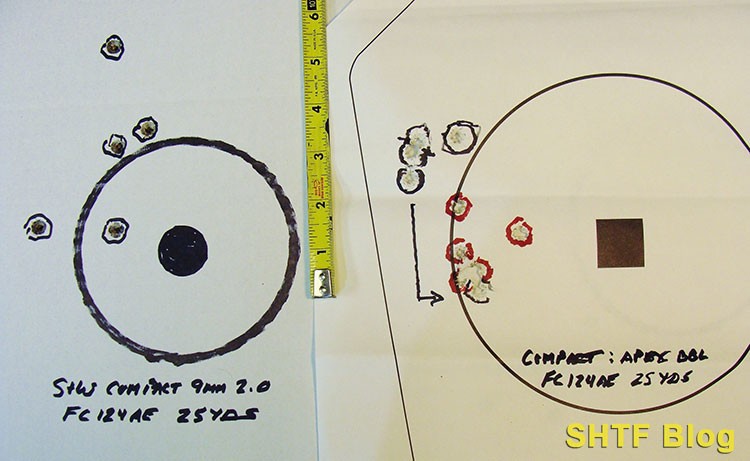
My blood pressure returned to normal once I discovered the cause; one bullet had clipped a towel that I’d draped above the sandbag rest (whew). Later, I drifted the rear sight right to gain a spot-on zero. Time for a second MRDS.
For the record, I remain an Smith & Wesson devotee. During the past several decades, I’ve owned or inventoried a large number of S&W pistols and revolvers, most of which performed admirably.
Always a proponent of common function, the above two M&Ps will join others including a smaller 9mm Shield and a tiny .380 Bodyguard.
The Shield started out as an agency T&E sample, but it shot so accurately that I finagled a way own it. The little Bodyguard is no slouch either.
Accuracy Comments
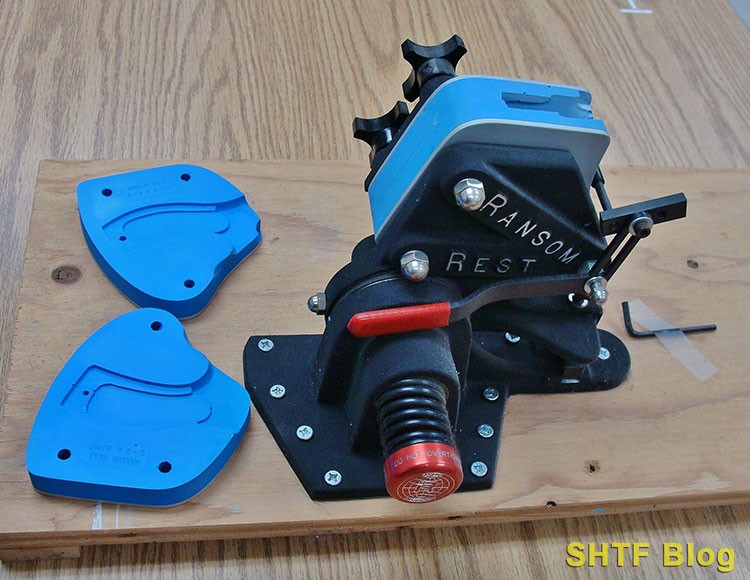
My results were identical to Apex Tactical’ s accuracy claims of 1 ½” five-shot groups at 25 yards. This expectation is based on handheld shooting methods, using good ammunition. Accuracy supposedly will be better using a mechanical Ransom Rest.
I was shooting handheld off a solid sandbag rest, but access to Ransom Rests has helped refine my system. Using metal-frame handguns, I discovered I could come close off bags – but only for around 30 rounds. Probably due to brain and vision fade, I’ll then lose ground to the mechanical system. Polymer-framed pistols are a different animal though.
Variations in handheld grip compression can flex the material to the detriment of peak accuracy. Still, 1 ½-inch groups are nothing to sneeze at.
Ammo Notes
Due to the ammo drought, I concentrated on a three proven 124-grain 9mm loads on hand; Federal American Eagle FMJ, Speer Lawman TMJ, and Speer Gold Dot JHP. The above groups were produced using plain-Jane AE, which has been our primary 9mm Q-load for more than two decades (purchased by pallet-loads). SHTF Blog also has a list of bulk ammo sellers.
Buy the Apex Grade 9mm Semi Drop-In Barrel (Optics Planet)
No doubt, there are more accurate choices, but for us, good ‘ol AE has performed well in a number of pistols including several high-end custom 1911s. Since 9mm pickings remain lean, I’m more than happy with 1 ½” results.
Final Take
So, do you need more accuracy than your stock pistol can provide? If it’s main role is defense, probably not. Ranges will likely be close, there are potential liabilities associated with “tricked-out” guns, and it’ll probably wind up in an evidence locker. Such an installation will also more than likely void most factory warranties.
For more information, I recommend giving this video from Apex themselves a quick look:
For others seeking top-flight accuracy I’d say an Apex barrel is worth its $175 cost. And then there’s the suppressor crowd. For only $25 more, Apex sells threaded versions.

2 comments
Very well written. Thanks for the write-up and support of our product. ~Scott Folk Apex COO
Thanks for dropping by, Scott.